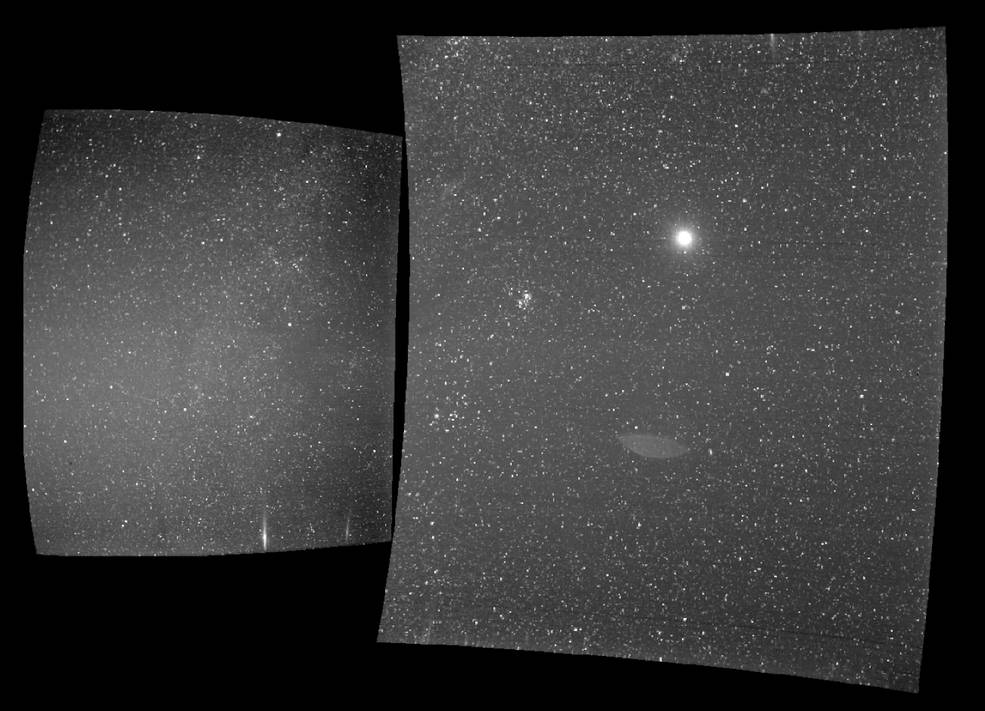NASA’s Parker probe left our planet earlier this year on its journey to the sun, where it will bring humanity closer to our solar system‘s host star than ever before. The space agency has now released a new image of Earth captured by its Parker Solar Probe on its way to the sun.
The image NASA released was captured on Sept. 25 by Parker’s Wide-field Imager for Solar Probe, also known as the WISPR instrument. Since image shows a lot of stars and other celestial bodies, the agency zoomed in onto Earth, revealing a blurry, slight bulge on its right side. NASA said in a statement that the bulge is the moon peeking out from behind Earth.
Hello, #ParkerSolarProbe! ?? The spacecraft took a look back at Earth on Sept. 25. Earth is the large bright object in the right side of the full image — and if you zoom in, you can even see the Moon peeking out from behind Earth on the right! https://t.co/Wwh4ONn81A pic.twitter.com/Es5gGBIpc1
— NASA Sun & Space (@NASASun) October 24, 2018
When NASA’s Parker probe took the stunning photo of Earth, it was located about 27 million miles from Earth. The average distance between the sun and Earth is 93 million miles. The probe was launched in the early hours of Aug. 12 atop a United Launch Alliance rocket.
“A United Launch Alliance Delta IV Heavy rocket launches NASA’s Parker Solar Probe on a mission to touch the Sun, on Sunday, Aug. 12, 2018 from Launch Complex 37 at Cape Canaveral Air Force Station, Florida,” NASA’s website states. “The Parker Solar Probe is humanity’s first-ever mission into a part of the Sun’s atmosphere called the corona. Once there, it will directly explore solar processes that are key to understanding and forecasting space weather events that can impact life on Earth.”
The corona is the outer layer of the sun’s atmosphere.
The $1.5 billion mission will be a difficult one for NASA’s Parker probe, the agency said. The heat and radiation it must face on its journey to within 3.8 million miles of the sun’s surface will be brutal. It must withstand temperatures of nearly 2,500 degrees Fahrenheit. However, NASA protected the spacecraft with a 4.5-inch-thick carbon composite shield. Parker’s distance from the sun will be seven times closer than that of the previous closest spacecraft, Helios 2, which flew within 27 million miles of the sun in 1976.
Using Venus’ gravity, NASA’s Parker probe will complete seven flybys over the next seven years so it can gradually approach its planned orbit closer to the sun. During its closest approach in 2024, the probe will be traveling at about 430,000 miles per hour, which will set a new speed record for a man-made object.












